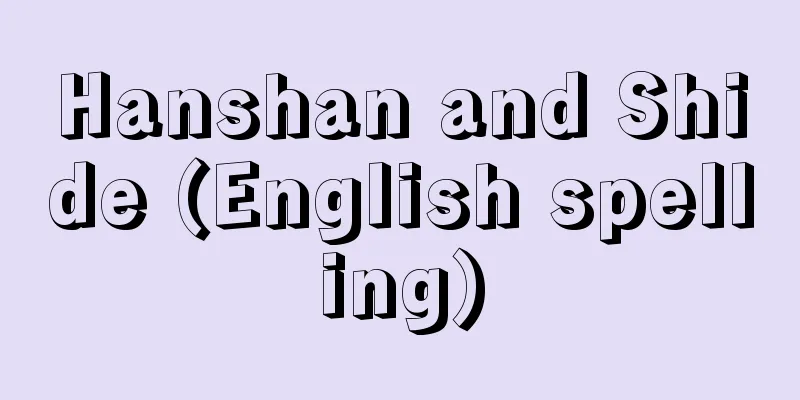Pan-chi-wen (English spelling)

|
A pattern used on copper vessels and copper mirrors from the Shang and Zhou dynasties to the Warring States period in China. "Ban" means "to be anxious" and "mizuchi" means a young dragon without horns, and they express the state of being intertwined with each other. This is a variation of the "kui-ryu" pattern. Source: Encyclopaedia Britannica Concise Encyclopedia About Encyclopaedia Britannica Concise Encyclopedia Information |
|
中国,殷・周~戦国時代の銅器や銅鏡に用いられた文様。蟠は「わだかまる」,螭(みずち)は角のない若い竜の意で,互いにからみ合うさまを表す。夔竜文の一つの変形文様。
出典 ブリタニカ国際大百科事典 小項目事典ブリタニカ国際大百科事典 小項目事典について 情報 |
Recommend
Kappa - Bob cut
A type of hairstyle worn by young girls. It was so...
Pollux (mythology) (English spelling)
…the twin brothers, Kastōr and Polydeukēs (Latin:...
Loyd, S.
...The minimum number of moves is 255. The 15 puz...
canario
…Though the origins of dance in Spain are very ol...
Sachsenhausen
...It was divided into an upper town, Oberstadt, ...
Enkianthus subsessilis (English spelling) Enkianthussubsessilis
… [Kei Yamazaki]. … *Some of the terminology that...
Older sister - Anesama
These paper dolls are made with crepe paper in a ...
Le Chapelier, IRG (English spelling) Le ChapelierIRG
…The official name was “Decree (law) on the assem...
Salomon Trismosin
Although his birth and death years are unclear, he...
Letters
…After Symbolism, modern poetry attempted to reco...
Japanese POW Journal
A historical biography by Hasegawa Shin. Serialize...
Mackinnon, W.
…A chartered company that received a royal charte...
Ome Highway - Oume Highway
A road that runs from Shinjuku Ward, Tokyo to Kof...
Gǎn shàn de qīng (English spelling)
1546‐1622 A Huayan monk from the late Ming Dynasty...
FA (soccer) - FA
…In an attempt to eliminate this inconvenience, a...









